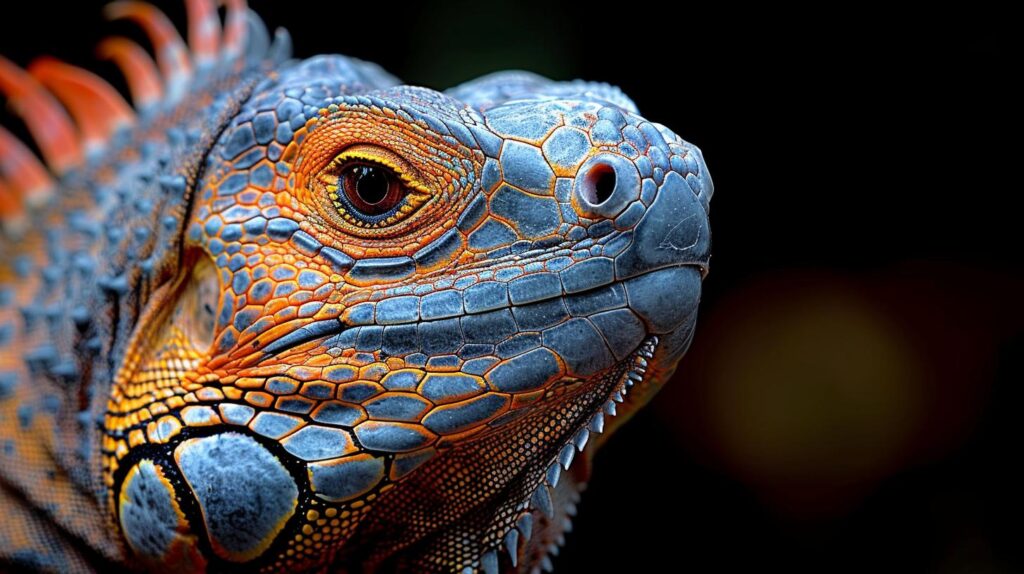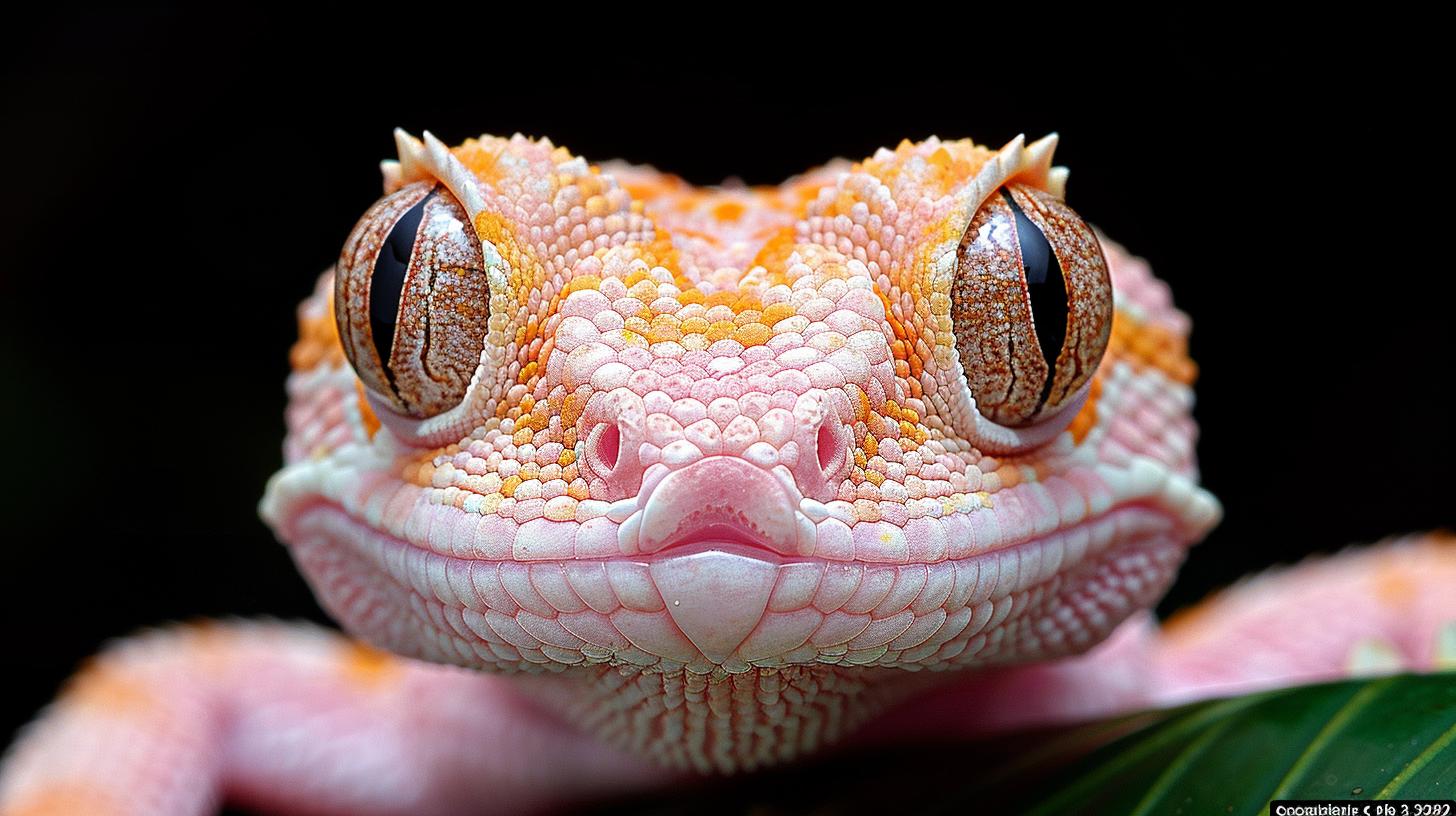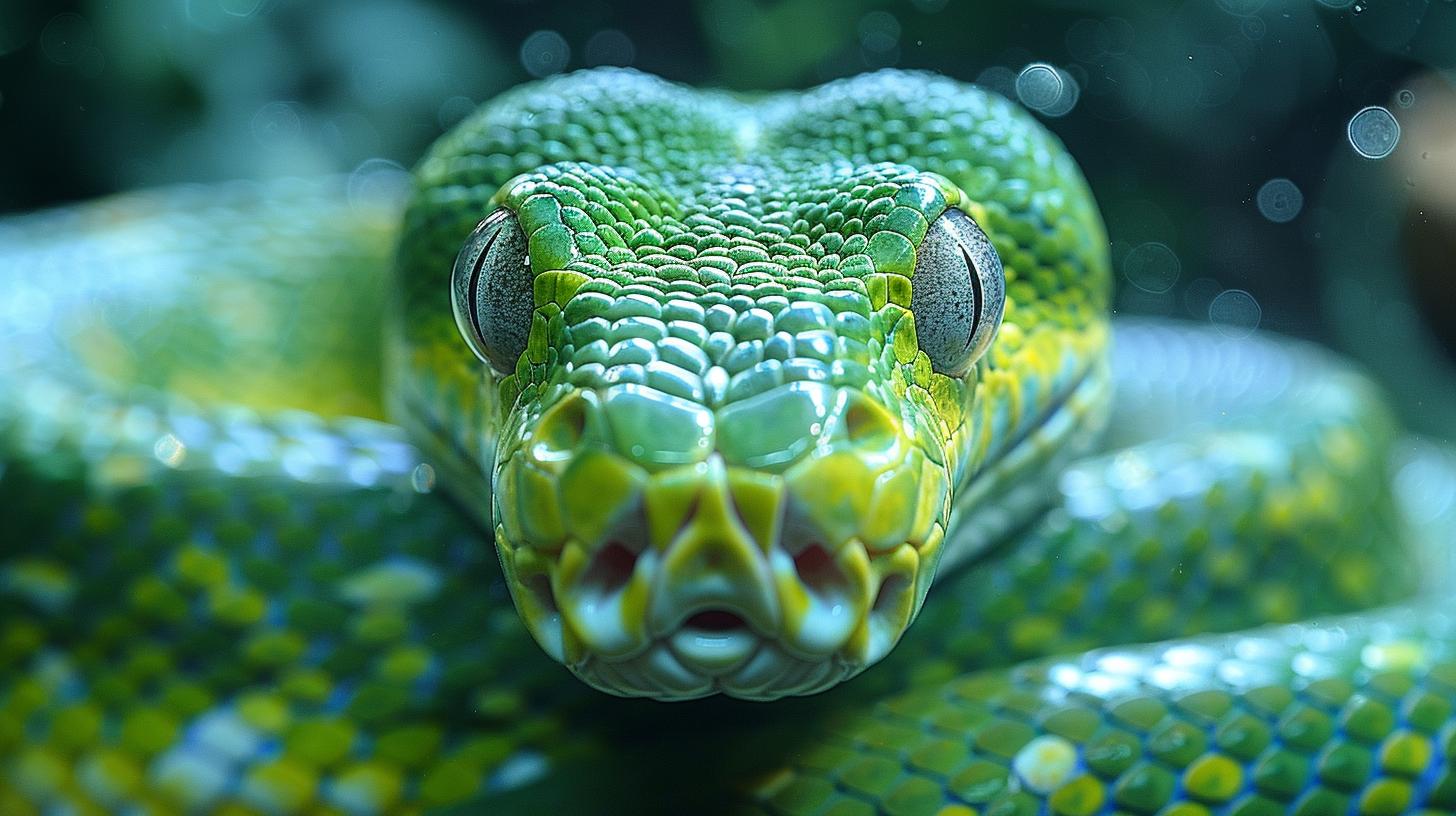5 Best Signs Your Reptile May Be Sick

Understanding Your Reptile's Health
With the rise in popularity of keeping reptiles as pets, the conversation around sickness in reptiles has become ever more critical. For enthusiasts and pet owners alike, recognizing and understanding the nuances of their reptile's health is fundamental. The journey begins with acknowledging that these creatures often reveal their discomfort differently from other pets.
This section delves into the essence of observing your reptile's behavior and physical state, underscoring the importance of vigilance in detecting early signs of potential health issues. Through keen observation, pet owners can significantly influence the success of treatments and improve their beloved reptile's quality of life.
A noticeable shift in appetite or eating habits often raises a red flag for pet owners. A decrease or sudden alteration in how much or frequently your reptile eats could point towards various health challenges. This segment emphasizes the need to monitor any changes closely - whether a reduced interest in food or an unexpected preference for different meals.
These variations could indicate stress, digestive troubles, or more severe conditions requiring professional attention. Understanding that changes in eating habits are not just whimsical but possible signs of distress is a pivotal step towards maintaining your reptile's well-being.
Equally telling are alterations in customary behaviors which might be indicative of discomfort or illness in your pet. Common adjustments might include uncharacteristic aggression, showing excessive lethargy, or displaying clear signs of stress such as pacing or frequent hiding. Pet owners should consider any deviation from normal behavior as a significant index that warrants further investigation.
Recording these behavioral shifts can provide invaluable insights for veterinarians, facilitating timely and accurate diagnoses. This part aims to equip caregivers with the knowledge to distinguish usual conduct from potentially alarming changes, ensuring early detection and intervention.
By emphasizing these key areas - from eating habits and unusual behaviors to skin health - this article serves as an essential guide for anyone committed to providing their reptilian companions with attentive care. Monitoring these indicators diligently allows pet owners to act swiftly at the first sign of trouble, paving the way for a healthier life for their cherished pets.
Changes in Appetite or Eating Habits
When it comes to the health of reptiles, one of the most telling signs that something might be amiss is a change in appetite or eating habits. This shift can encompass a range of behaviors - from a complete refusal of food to an unusual increase in consumption. Noticing these changes early can be pivotal in addressing *sickness in reptiles*, providing a critical window for intervention before more severe symptoms develop.
- Decreased Appetite: A sudden lack of interest in food could indicate various health issues, such as parasitic infections, stress, or more serious conditions like metabolic bone disease.
- Increased Appetite: Conversely, an unexpected rise in hunger might suggest problems like parasites that impact nutritional uptake or endocrine disorders.
Reptile owners should also pay attention to nuances in their pet's preference for certain types of food over others which may suddenly change. For example, if a typically insectivorous lizard begins to refuse insects but shows interest in other types of food might hint at oral health issues or other discomforts while eating customary food items.
Observing how your reptile eats can also offer clues about its wellbeing. Difficulty grasping or chewing food, for instance, could reveal dental problems or vitamin deficiencies affecting jaw strength. Similarly, reluctance to eat publically seen favorites without apparent reason should prompt concern and closer monitoring.
By maintaining detailed records of your reptile's dietary habits and any notable changes, you enhance your ability to provide this information to a veterinarian who specializes in reptile care, thus enabling them to diagnose potential causes accurately. Regularly reviewing these notes helps to track patterns over time which could signal emerging health problems.
Recognizing changes in appetite and eating behaviors forms just one aspect of staying vigilant about your reptile's health but is undeniably crucial. As we move forward through this guide on recognizing signs of *sickness in reptiles*, keep these points about dietary shifts at the forefront of your observation efforts. The next section will delve deeper into unusual behavior patterns that further indicate when professional advice and intervention may be necessary for maintaining the well-being of these fascinating creatures.
Unusual Behavior
In navigating the intricate journey of reptile care, one must be attuned to the nuances that could signify a departure from their pet's normal behavior. Unusual behavior in reptiles is not merely a topic of curiosity but can be a critical red flag signaling underlying health issues. It is these deviations from the norm that alert perceptive owners to potential problems, potentially averting serious complications by facilitating early intervention.
This emphasis on early detection and reaction forms the crux of ensuring your reptile leads a healthy life. By understanding what constitutes abnormal behavior, reptile enthusiasts can better safeguard the well-being of their scaly companions.
Identifying Distinct Changes
One of the primary indicators that something may be amiss with your reptile is a noticeable shift in its day-to-day activities. Such changes could manifest as increased aggression, unusual lethargy, or signs of anxiety and stress that were previously absent. For instance, if a typically docile creature begins exhibiting aggressive tendencies without provocation, this could indicate discomfort or sickness in reptiles
Similarly, if an active reptile becomes dormant or shows disinterest in exploring its habitat, it's essential to take note. Keeping a record of these behavioral alterations provides invaluable insights when seeking veterinary assistance.
Stress-Induced Behaviors
Reptiles are sensitive creatures; hence their environment plays a pivotal role in their overall health and demeanor. Modifications to their surroundings or routine stressors can lead to behaviors indicative of distress. Symptoms such as refusal to eat, persistently hiding, or engaging in repetitive motions are telltale signs needing attention.
Environmental triggers including inadequate heating, excessive noise, improper lighting, or lack of privacy can significantly impact your pet's mental state leading to stress-induced actions. Acknowledging and addressing these factors promptly can alleviate the stressors causing such behaviors.

As we delve deeper into recognizing these unusual behavioral patterns and understanding their implications on our reptilian friends' health status, it becomes evident how vital our awareness and responsiveness are. Spotting these signs early on not only speaks volumes about our dedication to their well-being but also empowers us as caretakers to enact necessary interventions before minor issues escalate into major health concerns.
Skin and Shedding Issues
In the fascinating realm of reptile care, skin and shedding processes play a crucial role in maintaining the health and well-being of these exotic pets. A reptile's skin is not only its largest organ but also a direct reflection of its overall health condition.
As such, any signs of irregularity in shedding or the appearance of the skin should raise immediate concern for pet owners. Early detection of such issues can be vital in addressing underlying health problems, including those related to nutrition, habitat conditions, or even more serious diseases linked to sickness in reptiles
Shedding, or ecdysis, is a natural process for reptiles through which they discard their old outer layer of skin to allow for growth and remove parasites that may have attached to their old skin. While this process is typically routine for healthy reptiles, problems can arise due to various factors such as poor humidity levels, inadequate nutrition, or underlying health concerns.
Understanding what normal shedding looks like for your specific type of reptile and being alert to any deviations from this pattern are essential steps in ensuring your pet remains healthy.
Recognizing Incomplete Shedding
Incomplete shedding or dysecdysis is a common issue faced by many reptile owners. This condition manifests as patches of old skin remaining attached to the body after a shed, particularly around sensitive areas like the eyes, tail tip, and extremities.
Incomplete shedding could indicate several potential problems ranging from improper habitat humidity to serious nutritional deficiencies. Keeping a vigilant eye on your pet's shedding process and noting any instances of incomplete shedding can provide critical early warnings that need professional evaluation.
Discerning Skin Abnormalities
Another major aspect underpinning the health status of reptiles involves monitoring for changes or abnormalities in their skin apart from the regular shedding issues. Lesions, discoloration (beyond normal color changes associated with some species), unusual softness/stiffness, and unexplained wounds all serve as red flags signaling possible health challenges
Healthy reptile skin should appear vibrant and free from blemishes unless it's just before a shed when it may look duller. Any marked deviation from this norm could signify deeper underlying health concerns necessitating swift action.
The Significance Behind Observing Your Reptile's Shedding and Skin Condition
In summing up the importance of closely observing your reptile's shedding patterns and skin condition lies not only in ensuring their physical comfort but also in preventing potential health issues from escalating into severe problems. By recognizing symptoms early on - such as incomplete sheds or abnormal spots on the skin - and understanding what these signs might indicate about your pet's overall health state help facilitate timely interventions.
Whether adjustments need to be made within their environment or if veterinary assessment is required, awareness and responsiveness concerning these aspects are key pillars in fostering a nurturing environment where your scaly companion can thrive.
Changes in Feces
The examination of a reptile's fecal matter can be an invaluable practice in identifying the early stages of *sickness in reptiles*. Although it may seem less than appealing, becoming familiar with the normal appearance of your pet's excrement is essential for maintaining their health. The primary characteristics to monitor include consistency, color, and frequency. Any marked deviations from the norm could be indicative of underlying health concerns.
At first glance, changes in feces might simply suggest dietary issues or stress. However, it could also signify infections or parasitic infestations. For instance, diarrhea or unusually soft stools might hint at a gastrointestinal upset or infection. Conversely, unusually hard or infrequent fecal matter could signal dehydration or impaction problems within your reptile. Recognizing these differences plays a critical role in proactive care management for your pet.
| Sign | Possible Indication |
|---|---|
| Diarrhea / Soft Stools | Gastrointestinal upset, Infection |
| Hard / Infrequent Feces | Dehydration, Impaction |
| Blood in Stools | Internal bleeding or Parasites |
It is equally important to note changes in the color of the feces, which might point to internal bleeding if red streaks are present or liver issues if the stool displays an abnormal yellowish hue. These significant shifts warrant immediate attention and possibly a consultation with a vet experienced with reptiles. Taking swift action can averting more serious complications that might arise from neglecting these signs.
Despite these concerns, tracking and analyzing changes shouldn't induce panic at every slight variation. Diet alterations-such as introducing new foods-can lead to temporary adjustments in excretion patterns. Hence, taking notes on dietary changes alongside fecal observations can help delineate whether observed alterations are cause for concern or merely benign adjustments to new diets.
Recognizing when these shifts are part of normal fluctuations versus when they signal potential *sickness in reptiles* requires careful observation and sometimes consultation with veterinary professionals specialized in herpetology. Establishing a baseline understanding of what is typical for your particular species aids immensely in early disease detection and ultimately ensures their longevity and well-being.

Respiratory Symptoms
Reptiles, with their unique physiological makeup, exhibit a variety of signs when grappling with respiratory issues. Recognizing these symptoms can be key to ensuring the well-being of your pet. Respiratory problems in reptiles, reflected through sickness in reptiles, tend to manifest distinctly compared to other animals. Owners must stay alert to these markers for timely intervention.
One of the first and most noticeable indicators of respiratory distress is an abnormal breathing pattern. This may include apparent difficulty breathing, such as rapid breaths or pauses longer than usual between breaths. Additionally, if your reptile begins to breathe with its mouth open more frequently-a behavior known in herpetological care as "gaping"-it can also signify respiratory illness. Such signs demand immediate attention, as they denote that the reptile could be experiencing significant discomfort or even pain.
- Nasal discharge: The presence of mucus around the nostrils.
- Oral discharge: Mucus noted around or inside the mouth.
- Puffing cheeks: An attempt by your reptile to clear obstructed airways.
These symptoms require careful observation because gradual onset might make them easy to miss in the early stages. For instance, nasal or oral discharge can initially appear minimal but could indicate serious underlying conditions like infections or blockages.
In delving further into such respiratory symptoms related to *sickness in reptiles*, it's fundamental not only to monitor these outward signs but also adjust care practices accordingly. Humidity and temperature play critical roles in a reptile's environment; incorrect levels can lead to a host of health issues including those affecting respiration. Monitoring and maintaining optimal conditions within your pet's habitat becomes an indispensable part of preventing respiratory infections and ensuring their long-term health.
This segment lends insight into how crucial recognizing early signs of respiratory trouble is for sickness in reptiles management. Yet, as we've seen with prior indicators discussed throughout this article, there's an interconnectedness among various health signals-a change in one area often impacts another.
Consequently, while these details highlight specific concerns related to breathing complications, they remind us of the importance of holistic health evaluations for our pets. Continuation into subsequent sections will delve deeper into actionable steps once ailments are suspected, underscoring the value of comprehensive care strategies for mitigating sickness in reptiles effectively.
The Steps to Take When You Notice Signs of Sickness
Having traversed the landscape of reptile care, we've illuminated the path for discerning and addressing the myriad of signs that may indicate your beloved reptile is navigating the turbulent waters of illness. Recognizing early symptoms like changes in eating habits, unusual behaviors, or more tangible signs such as skin shedding issues and respiratory difficulties underscores not just a commitment to their well-being but an investment in their longevity.
The journey through understanding these premonitions is critical, equipping you with the knowledge to pivot swiftly and adeptly to support your pet's health.
As we draw close to the end of this guide on spotting sickness in reptiles, it's vital to remember that your vigilance as a pet owner can significantly alter your pet's health trajectory. The steps discussed mark not an endpoint but a beginning-to a deeper understanding and connection with your reptile companion.
Through consistent observation and prompt action, including environmental adjustments and seeking specialized veterinary care when necessary, you become not just a caretaker but a guardian of your reptile's health.
We invite you now to continue nurturing this bond with your scaly friend by engaging further with our reservoir of articles dedicated to improving pet care practices. Let us be your guide in enriching both yours and your reptile's lives through informed care tactics designed for their thriving existence.
For more insights into creating a harmonious environment for all your pets or learning how to respond adeptly to their needs, feel free to navigate through our website's vast array of resources specially curated for passionate pet owners like you.
Frequently Asked Questions
What Are Four Signs of Illness or Disease in a Reptile?
Four signs that a reptile may be sick or suffering from a disease include a noticeable lack of energy or lethargy, changes in eating habits such as decreased appetite, unusual discharge from the eyes, nose, or mouth, and abnormal skin conditions like discoloration or shedding irregularities. Observing these symptoms early can facilitate prompt veterinary care.
Which Viruses Infect Reptiles?
Reptiles can be infected by several types of viruses that affect their health. Notable ones include Ferlavirus in snakes, which impacts the respiratory system; Sunshine virus in pythons and boas, causing neurological issues; and Ranavirus, which affects both aquatic and terrestrial species leading to systemic disease. These viruses can have significant health impacts on reptilian pets.
Can Reptiles Carry Diseases?
Yes, reptiles can carry diseases that may pose risks to humans. Salmonella is one of the most common bacteria associated with reptiles which they can shed in their feces without showing any symptoms themselves.
Transmission to humans can occur through direct contact with the animal or its environment, underlining the need for proper hygiene and handling practices when interacting with reptiles.
What Are the Most Common Diseases in Snakes?
The most common diseases seen in snakes include respiratory infections characterized by wheezing, open-mouth breathing, or mucus buildup around the nasal passages; mouth rot or infectious stomatitis presenting as swelling or pus in the oral cavity; and parasitic infestations both internal and external. Prompt recognition plays a crucial role in successful treatment outcomes for these conditions.
What Are the Symptoms of Botulism in Reptiles?
Symptoms of botulism in reptiles are primarily neurological due to the toxin's effect on nerve function but can vary depending on the stage of illness. Early signs include weakness followed by paralysis starting from the hind limbs moving forward, difficulty swallowing, lethargy, and eventual respiratory failure if not treated promptly.
What Are Some of the Signs of Ill Reptilian Health?
Common indicators of poor health in reptiles extend beyond visible illnesses to subtle behavioral changes such as reduced activity levels indicating lethargy; reluctance or inability to eat suggesting possible internal issues; swollen joints signaling possible infection or gout; and consistent problems with shedding hinting at underlying health concerns.
Being vigilant about such signs enables earlier intervention to mitigate serious health issues.
Leave a Reply
You must be logged in to post a comment.